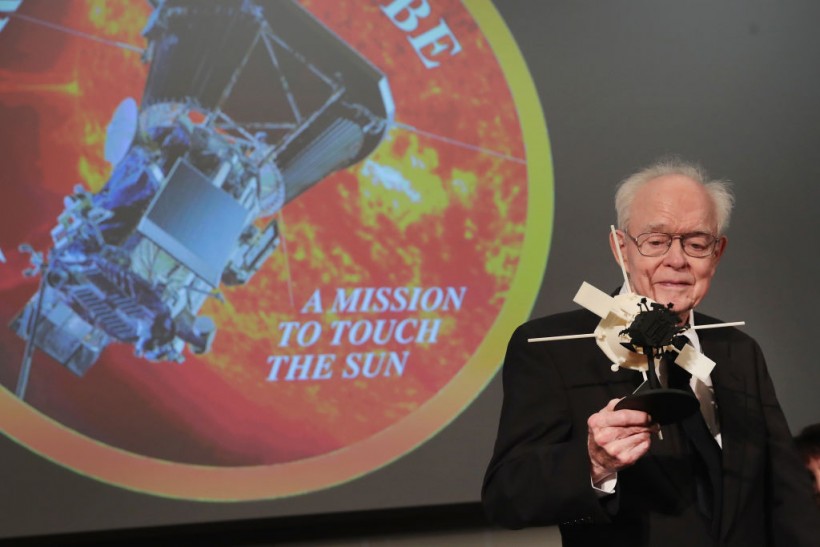Eugene Parker, an astronomer who predicted the presence of the solar wind, passed away on Tuesday at his Chicago home. He was 94 years old at the time.
According to The New York Times, the University of Chicago - where he had been a lecturer for decades - confirmed his death.
Eugene Parker is survived by his wife, Niesje, and three grandchildren in addition to his children.

CHICAGO, IL - MAY 31: University of Chicago astrophysicist Dr. Eugene Parker is presented with a model of the Parker Solar Probe at an event where NASA officials announced plans to deploy a solar probe into the sun's atmosphere for the first time on May 31, 2017 in Chicago, Illinois. Scheduled to be launch in the summer of 2018, the probe will be named the Parker Solar Probe in Dr. Parker's honor.
Who is Eugene Parker?
CNN said Parker, the son of an aviation engineer, grew up in Buffalo, New York, where he experimented with tin-can phones and studied microbes with his grandfather's microscope. In his senior year, Parker was just introduced to physics and found it intriguing enough to seek a degree and then a Ph.D. in the discipline.
Parker, then 30 years old and teaching at the University of Chicago, had barely started his professional career when he submitted a paper suggesting the notion of solar winds. Parker said that the sun emits a flow of charged gases known as the solar wind, which flows at a million miles per hour and covers most of the solar system. Parker's theory ran counter to how scientists understood the solar system at the time, who believed that all that existed between the planets was a vacuum.
ALSO READ: NASA Parker Solar Probe Captures Dark Side of Venus Glowing Like an Iron in Visible Spectrum
Parker needed an overruling from the editor of the Astrophysical Journal to have his manuscript published, which became part of his legacy, which also includes the Parker spiral form of solar winds and the Parker limit for monopoles for the length of galactic magnetic fields' survival.
Eric Parker and his sister, Joyce, stated they just knew their father was a scientist and didn't hear about his prominence in the area until later in life.
Eric told NBC New York that the elder Parker would periodically rise from the dinner table to scribble down an idea. His children remembered Parker as a hands-on father, an active hiker, camper, and artisan who sculpted busts of notable persons out of wood and produced most of the family's furniture.
Parker's Contributions to Science
Parker was lauded as a visionary in his field of heliophysics, which studies the sun and other stars, by NASA officials and academic colleagues. He is well known for his idea of the solar wind, a supersonic jet of particles from the sun's surface, which he proposed in 1958.
"Dr. Eugene Parker's contributions to science and to understanding how our universe works touches so much of what we do here at NASA," NASA Administrator Bill Nelson said in a statement. "Dr. Parker's legacy will live on through the many active and future NASA missions that build upon his work."
Parker noted in 2018 that his solar wind idea had been extensively panned and even derided when it was first published. In 1962, a NASA spacecraft mission to Venus proved his theory and the solar wind's influence on the solar system, including periodic communications system outages on Earth.
RELATED ARTICLE: NASA's Parker Solar Probe Bombarded by Plasma Explosions as It Gets Closer to the Sun; How's the Spacecraft Doing?
Check out more news and information on Space in Science Times.














